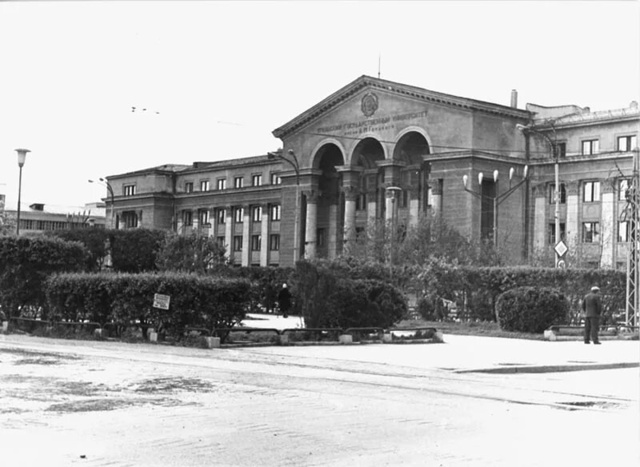The Ural School of Journalism: On the Eve of Its 90th Anniversary
вторник 9 сентября 2025, 13:43
 http://www.1723.ru/photo/sverdlovsk-63.html ___ |
____ |
The Ural School of Journalism is traditionally considered the third oldest in Russia – after those in Moscow and St. Petersburg. Its history begins in 1920 with the founding of Ural State University. Among the first faculties was the workers' faculty (rabfak), from which all humanities disciplines later "grew." In the same year, courses for chroniclers of UralROSTA were opened—it was their graduates who formed the basis of the journalistic community in the Urals. Simultaneously, courses and literary circles were created. In 1926, the Ural-Siberian Communist University (komvuz) was opened, and five years later, a newspaper department was established within it. However, all this was only initial (non-higher) education.
Ural journalists gained the opportunity to receive higher education in 1936 with the opening of the KIZh (Sverdlovsk Communist Institute of Journalism, later named after V.V. Mayakovsky). Among the first teachers was the writer P.P. Bazhov. The official opening took place on April 2, so it is on this day in 2026 that the Journalism Department will celebrate its 90th anniversary. In 1941, the KIZh, as a faculty, merged into Sverdlovsk State University. At that time, in the conditions of war and evacuation, the Ural Journalism Department became the main forge of journalistic personnel in the country. After the victory, it became part of the Department of History and Philology for a long 20 years. Often in those days, students were adults: employees of media, worker-peasant correspondents. The modern era can be counted from the late 80s–early 90s of the 20th century. Several significant events occurred simultaneously. B.N. Lozovsky, the “Legend of Russian Journalism” (and this is not a metaphor, but the name of the award he received in 2016), became the dean. Borders open, the Journalism Department receives foreign colleagues, and university staff travel abroad. The era of digitalization begins, the Internet appears, and with it, online media, new media, and convergence. Over 90 years of its existence, the Ural Journalism Department has created a scientific school (let us recall that to register it, three generations of scientists are needed). The founder of the Ural Scientific School of Journalism is considered to be V.A. Shandra: he was a professor and head of the Department of Press. His student, V.F. Oleshko, became not only his successor as head of the Department of Press, but also the second generation of scientists: it was from him that all the “branches” of the third generation came – those who actively work at the faculty today. Among the famous graduates that the Ural Journalism Department is rightfully proud of are the writer Vladislav Krapivin, the editor of the newspaper Soviet Sport Nikolai Tarasov, the theater critic Boris Kogan, the writer Vadim Ocheretin, and, of course, the creators of the scientific school and leaders at the faculty—Shandra, Oleshko, Lozovsky, and many others. You can read more about this in the book by the historian of the Ural Journalism Department—R.L. Iskhakov, Graduates of the Ural School of Journalism (1940–2016). It is available online and in print at the Liberal Arts & Humanities Circulation Desk (4 Turgeneva Street, Room 252). Author and translator: Olga Mukhina |



